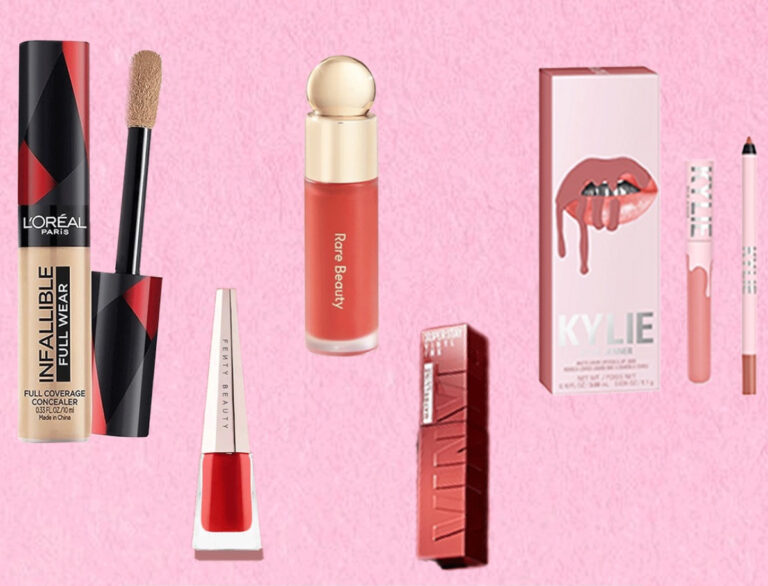
Everyone loves a juicy, new product. There’s nothing better than coming home to a brand new, ‘never-before-done’ skincare/makeup package. But the barrage of new products that are released every week, has become a bit much – even speaking as a beauty writer. The content around it is overwrought, influencers are running out of adjectives and honestly – how many long-lasting, hydrating, revolutionary lipsticks do we really need?
The dictionary explanation of revolutionary is: “involving or causing a complete or dramatic change”. You can’t expect me to believe that the Milk tint was ‘revolutionary’ because it was in jelly form. Have we forgotten that it only has a shelf life of 6 months, and is impossibly hard to blend? I refuse to believe that you can’t survive without the Dior lip gloss, or the newest Maybelline foundation which already has 4 relatively similar predecessors. Most new makeup is just a reiteration of an old formula in new packaging.
Fast beauty is warping the industry as we know it. The mass production of ‘on-trend’ products that are launched does much more harm than good (read, Youtforia’s rushed blackface foundation).
What Is Fast Beauty?
We all know how Shein drops a few hundred new designs every month (week). Similarly, there is a multitude of beauty brands that launch 7 to 10 new SKUs every few months in an attempt to stay relevant. A few that come to mind are Kylie Cosmetics, Colourpop Cosmetics, E.L.F, and Swiss Beauty.
Brands are locked in a race to deliver the latest and greatest, leaving behind months-long development cycles. E.L.F Cosmetics exemplifies this speed. According to a report, the brand launched 128 new products in 2017, a whopping 40% increase from the previous year.
Similarly, in a BoF article, the CMO of Pierre Fabre Group, which owns Eau Thermale Avene (those spring water sprays) and Glytone (medical grade skincare), said “an uptick in the acne space informed Glytone’s decision to release 10 new products in 2021.” It is important to note that in 2019, the skincare line launched (only) two products.
The appeal of this business model is obvious – fast beauty feeds our insatiable desire for novelty. The rise in beauty consumption and marketing has ushered in an era where brands have to stay ahead of trends; they do this by churning out products faster than you can say “matte lipstick.”
The Environmental Impact Of Fast Beauty
A survey by SkinStore revealed that women use an average of 16 products before leaving the house each morning. I know that seems preposterous but here’s a rundown of my maximal skincare routine: a facewash, toner, serum, moisturiser, sunscreen, lip balm. Now let’s do makeup: mascara, eyeliner, blush, lipstick, gloss, foundation, and concealer. That’s exactly 13.
But here’s the thing, while we’re happy to splurge on beauty, the average makeup and skincare aficionados (not including influencers, celebrities, and beauty writers like myself) own a whopping 40 products per person, even more in 2024. If only 16 of them get used till the end, we’re using approximately 40% of our collection. The rest? They sit abandoned until they’re eventually tossed out or passed to friends and family.
According to statistics from the Zero Waste Week, plastic waste from the beauty industry reaches over 120 billion units of packaging every year. Furthermore, in a report by the British Beauty Council, only 9% of plastic packaging is actually recycled while the rest makes its way to landfills.
Blame it on the influencers or the consumers, we are equally at fault. Platforms like YouTube and Instagram have normalised the idea of owning a truly extravagant array of beauty products. From meticulously organised, colour-coordinated shelfies to detailed skincare routines, our social media feeds are saturated with content that fuels this frenzy.
What Can We Do?
Even though it might not seem like it, all is not lost. Multiple brands are slowly gravitating to climate-conscious packaging, opting for refillable containers instead of single-use plastic. In the US, brands like eos, Garnier, and L’Occitane have also partnerned with a contractor to properly dispose of their packaging, as well as offer drop-off points for their consumers. Additionally, there is an advancement of research around biodegradable packaging.
Furthermore, many in the online beauty community have woken up to the problem. Movements like #NoBuy and #ShopMyStash encourage consumers to rethink their purchasing habits and use what they already own. #ProjectPan is a movement where shoppers encourage each other to finish a makeup product before buying the shiniest thing on the market.
The easiest way to solve this though, is to slow down. It’s not about the fastest finger first anymore, it’s about conscious consumption. Each of our purchases comes with a series of consequences. The cycle of fast beauty, much like fast fashion, is tempting but ultimately unsustainable.
We have to stop endlessly chasing the new and embrace beauty that’s kinder to our wallets, sanity, and, most importantly, our planet.
Featured Image: Instagram